Ella Zhou
Contact
Ella Zhou
Contact
Alibaba
AI User Journey Analysis Tool
B2B Internal Tool / AI Product Design / End-To-End prototyping
2025.05 - 2025.08
An AI user journey analysis tool, helping product designers to improve journey generation accuracy to 85% and reducing journey creation and analysis time by 70%
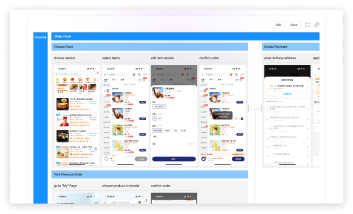

company

Ele.me
Ele.me is Alibaba’s key local services ecosystem. It provides instant food delivery and last-mile logistics within cities, serving millions of users every day.
Team
AI Design Team (Under Logistics System Design Team)
1 Sn. Design Team Lead, 2 Technical Consultants, Ella
Importance of User Journey
On average, Ele.me designers spend 2 - 4 weeks creating journey maps to reconstruct behavior paths and identify issues. This tool streamlines the process, cutting time, cost, and effort while accelerating Ele.me’s design output.
Problems
At Ele.me, the effectiveness of journey mapping is hindered by incomplete or unreliable user behavior data and inconsistent practices, making it difficult for designers to generate accurate insights and guide design decisions
1. Data Collection Problem
low data quality & time-consuming
2. Journey Creation Problem
low journey quality
Goal
Create an end-to-end AI user journey analysis tool that:
Automate and standardize user behavior data collection
Automate journey map creation with consistency and high-quality insights
How might we create this tool:
1. User Behavior Data Collection
INITIal proposal
Create a company-specific desktop plugin that integrates an internal auto-screenshot tool to automatically capture user behaviors, alongside a system that records raw user data at the system, browser, and page levels.
problems
Time-consuming
Resource-intensive
Redundant effort
Current method
Leverage open-source screenshot tools and the internal Analytics & Event Management (AEM) system to capture user data—including images and behavior data—at both browser and page levels.
pros
Time-saving
Easy to test
Resource-efficient
Future blueprint
Replace the open-source screenshot tool with an internally developed one, improving AEM system to add the capture of raw data at both system and real-life levels.
improvements
Data safety
Targeted features
2. Automatic Screenshots-to-Journey Map
1. Single User Journey Mapping
Automatically generate individual user journey
2. Journey Integration
Aggregate multiple user journeys
3. User Interface
UI design for the tool
2.1 Single User Journey Mapping
standards
90%
Image Consistency
80%
Image Completeness
70%
Title Accuracy
Model Iteration 1 | One multimodal model to handle all tasks

Model Iteration 2 | Model Collaboration

Final performance
> 85%
Image Consistency
> 90%
Image Completeness
> 80%
Title Accuracy
2.2 Journey Integration
How
Analyzed the logic and process of integrating user journeys, distilled two key elements—branching and unification—and mapped the critical steps across phases.
Model Iteration 1 | Define the AI’s task & Data Input
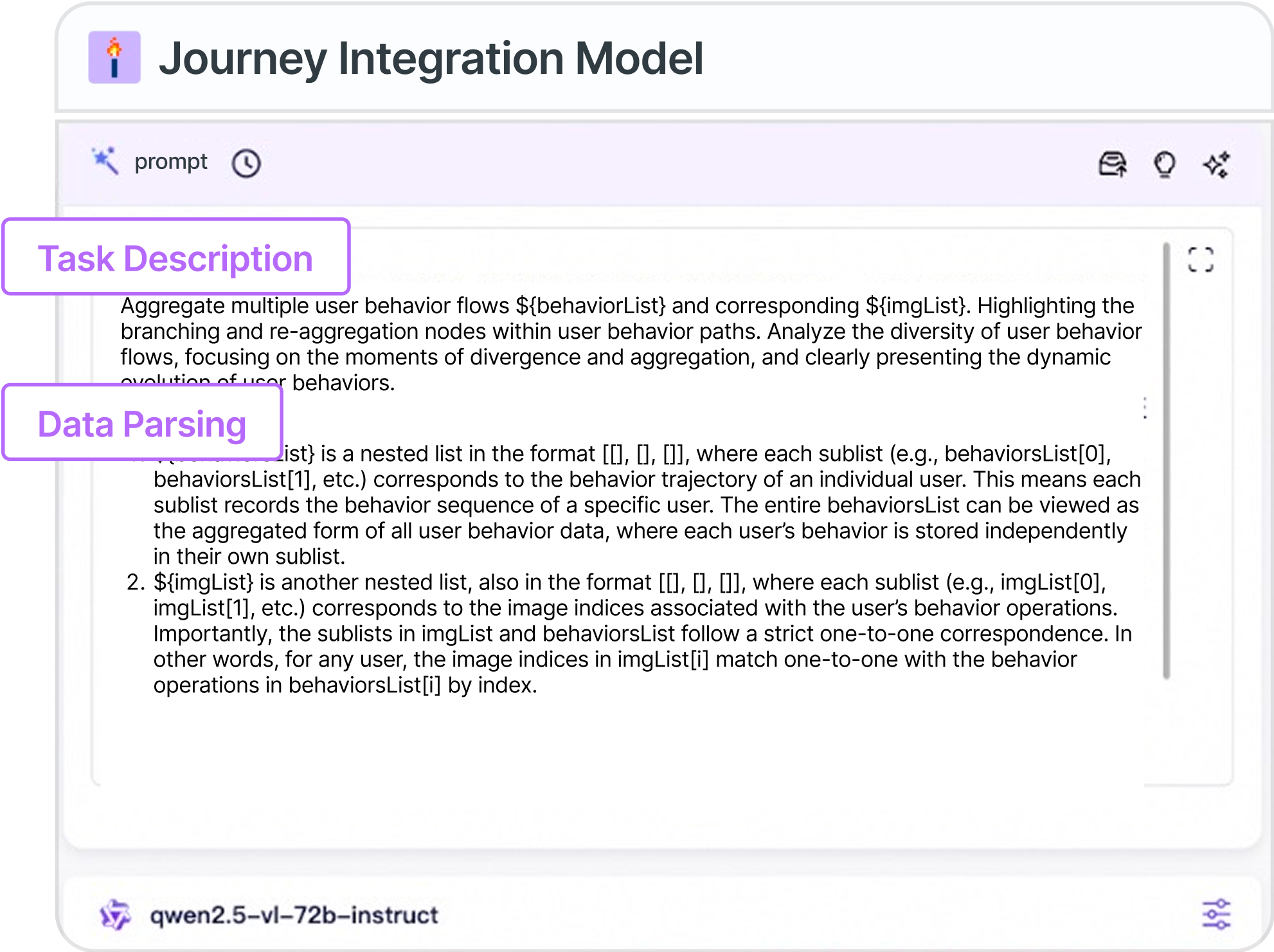
Model Iteration 2 | Add Task Logic & Structure
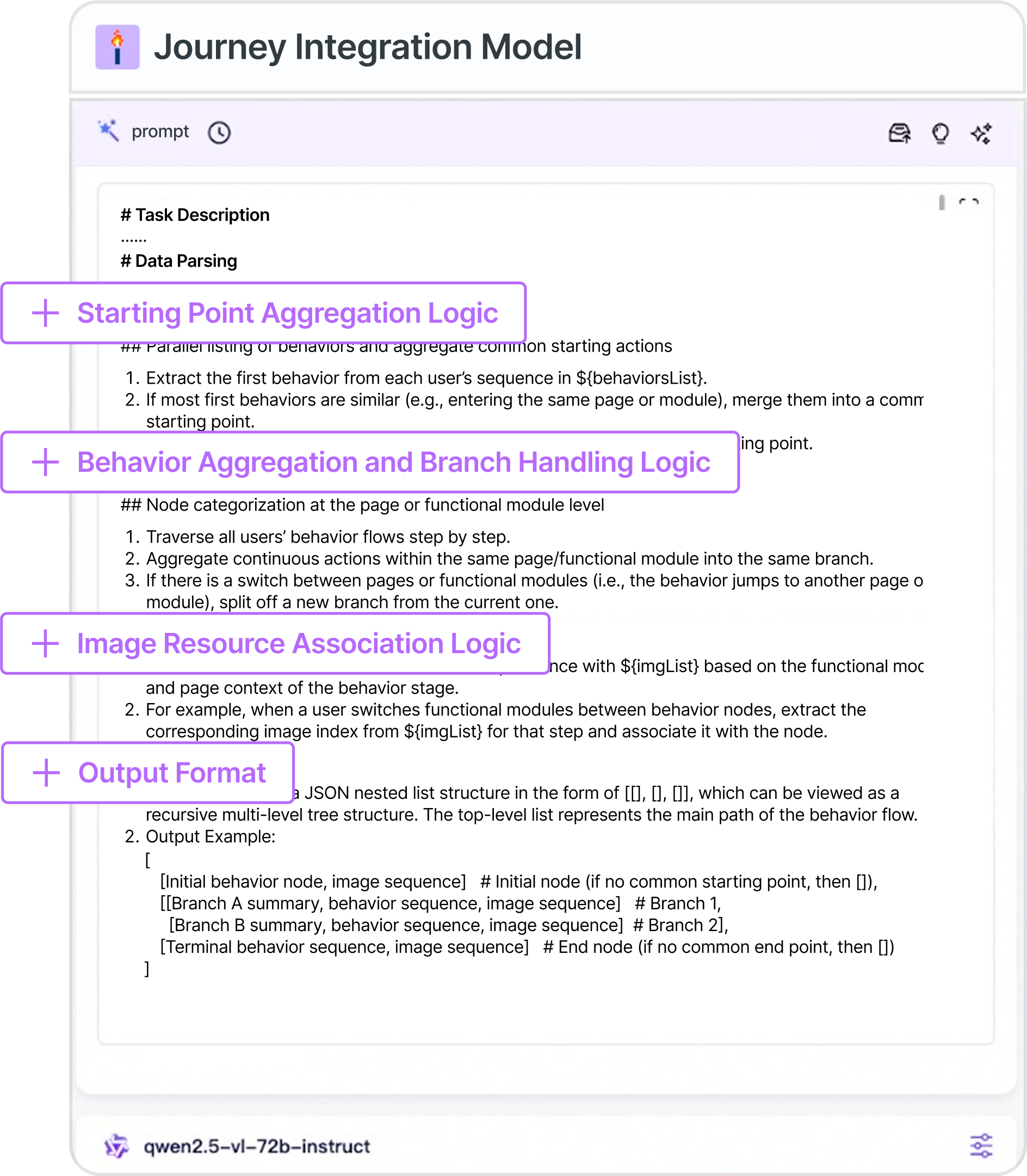
2.3 User Interface
Design the user interface for an AI journey tool from scratch based on Alibaba's Ant Design System.
Data input
Data input

Image upload
iteration 1
Add error feedback
add retry shortcut

iteration 2

iteration 3
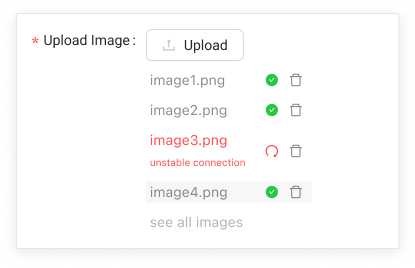
generate & Pause journey map
Iteration 1

After
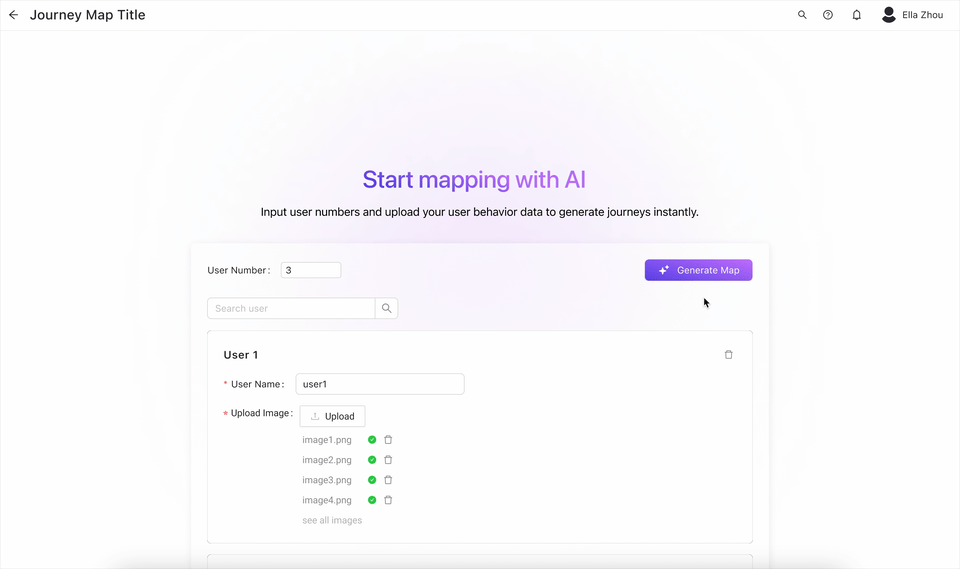

Journey Visualization
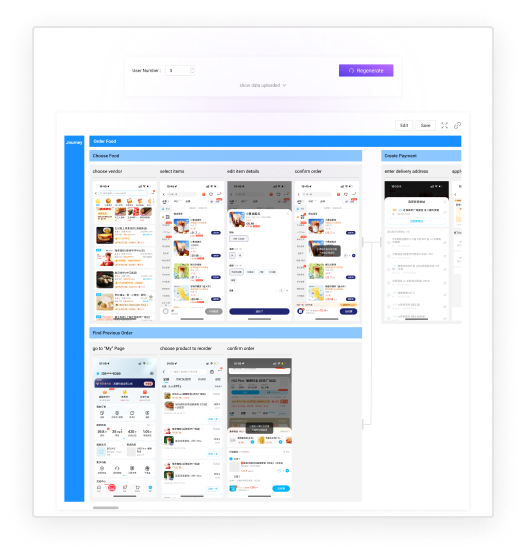
Replacing icons with text labels for frequently-used features, improving clickability and ease of use
Adding links to
reduce cognitive
load.
Manual edit process
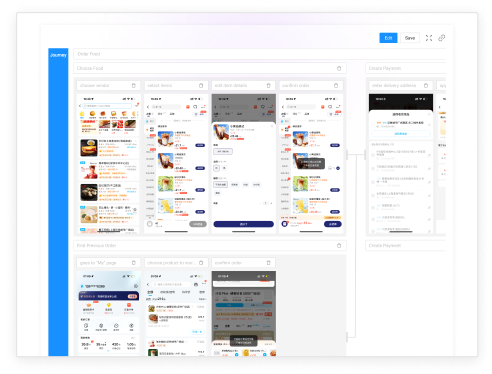
Level 1
Level 2
Level 3
Level 4
Deletion is hierarchical: if a Level 1 item is deleted, all its associated Level 2, Level 3, and Level 4 items are also removed.
Additional Contribution
1. Vibe Coding
Integrate AI workflows and ML models, allow user input via the UI, and visualize the output on the front-end
2. AI Problem Analysis
Use AI to connect insights across the user journey and help designers identify problems and opportunities more efficiently
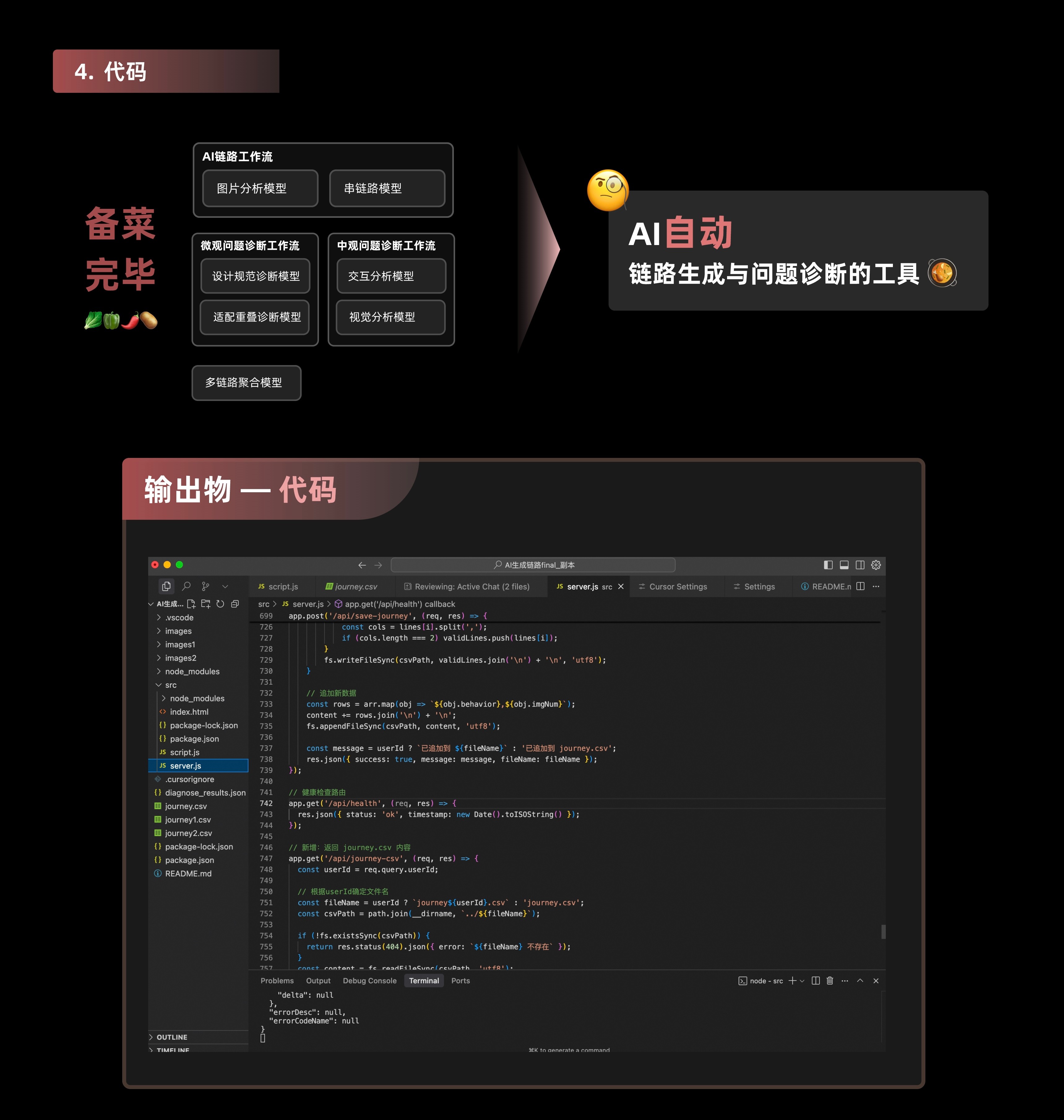
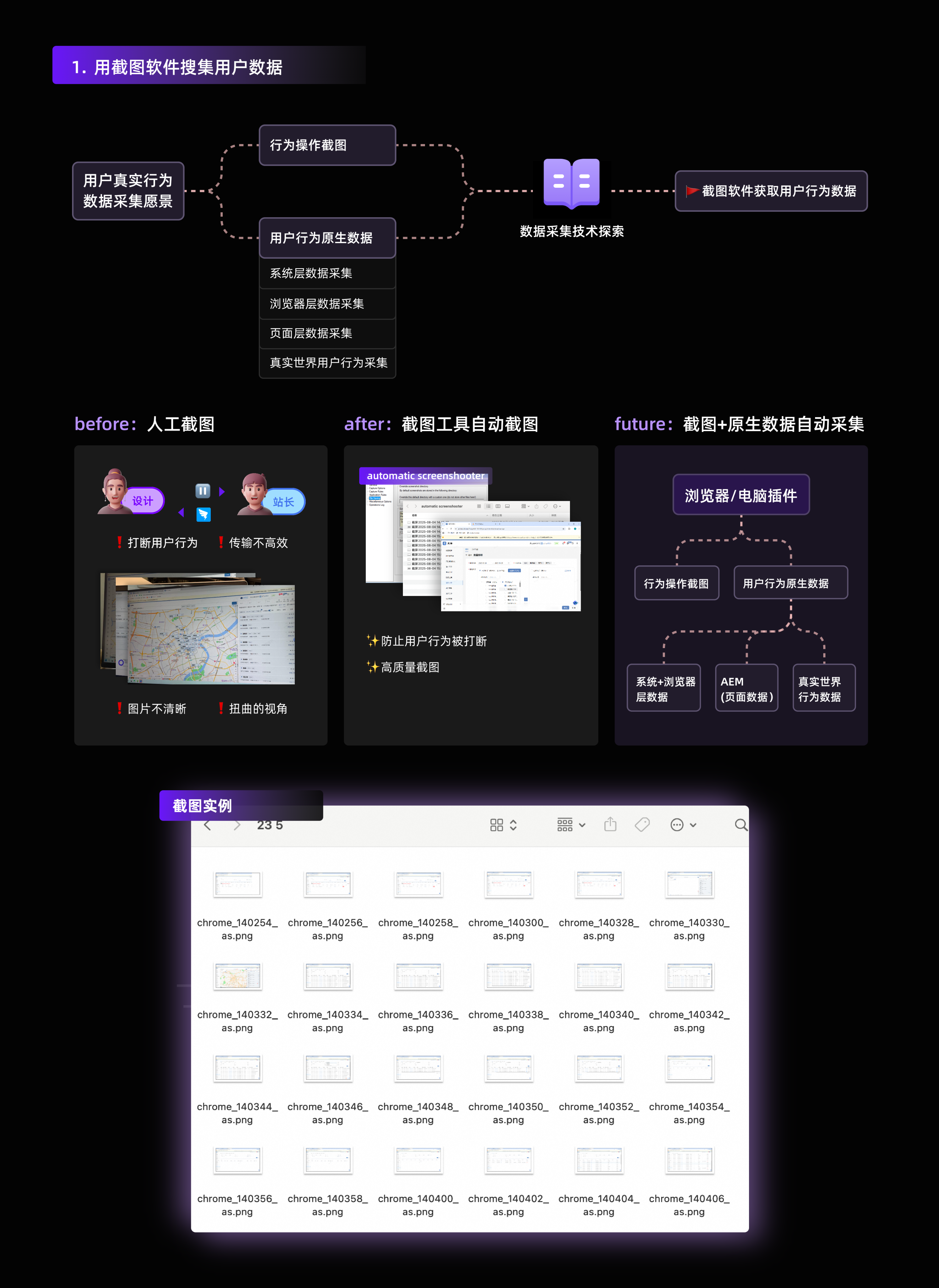

AI single-journey workflow
Image Analysis Model
Model for linking journeys
Model for integrating journeys
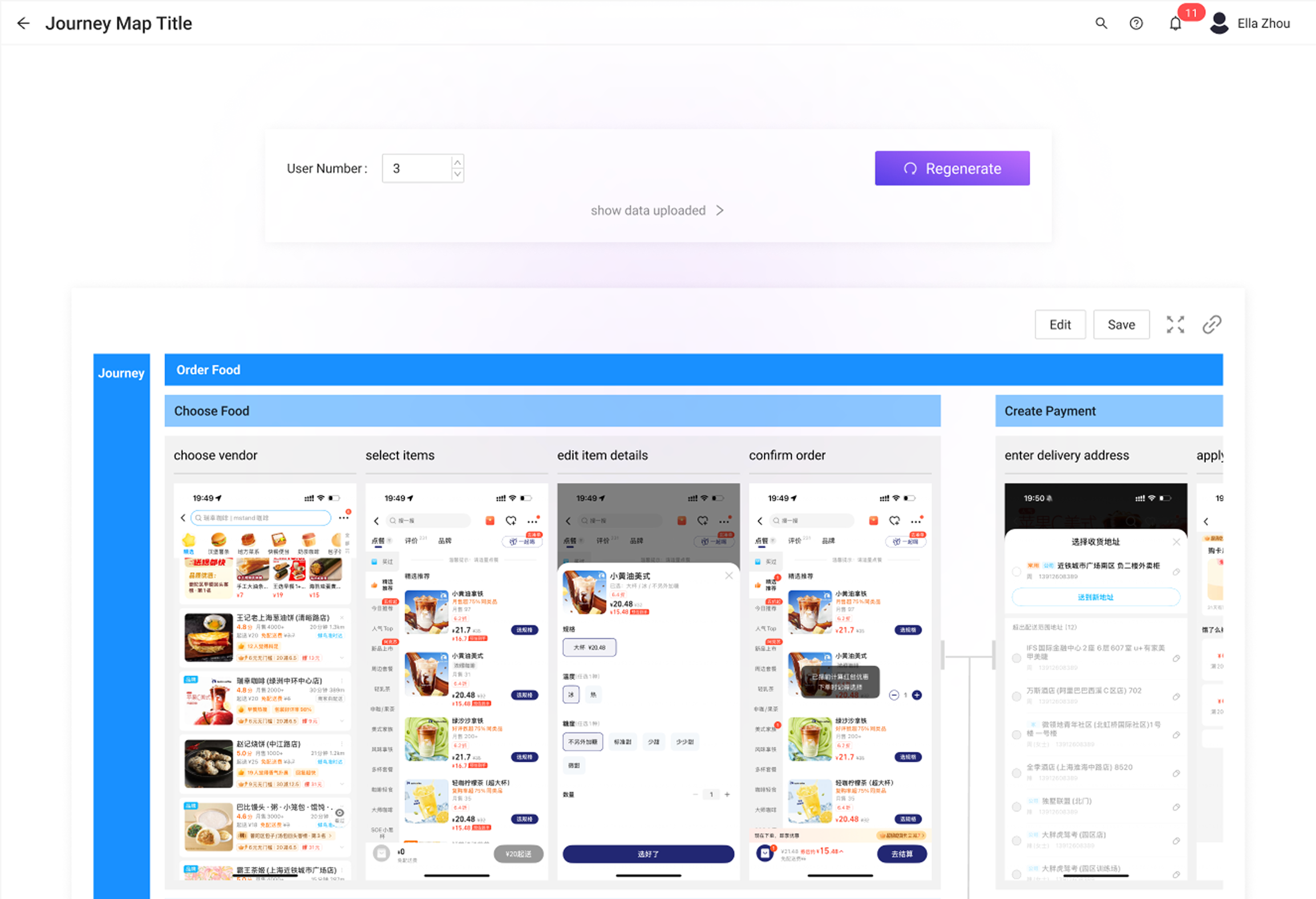
User behavior data
Code
AI workflows & models
User input via the UI, store user input
Journey visualization on the frontend
Call model API
Call model API
Save model output
vibe coding


AI problem analysis
standards
Blue print
Utilized AI workflows and different internal resources to evaluate problems in line with design standards.
What I learned
What if no single AI model can produce the ideal outcome on its own?
It is common that when designing with AI, its capabilities may not reach the state we want. How should this be addressed?
Define standards, test and iterate to meet them, and establish a future vision for continued progress.
How to address design challenges arising from standards, creativity, or business logic constraints?
Explore methods by leveraging company resources alongside self-directed research and exploration.
© 2025 Ella Zhou
Ella Zhou
Project
Resume
Contact
Alibaba
AI User Journey Analysis Tool
B2B Internal Tool / AI Product Design / End-To-End prototyping
2025.05 - 2025.08
An AI user journey analysis tool, helping product designers to improve journey generation accuracy to 85% and reducing journey creation and analysis time by 70%
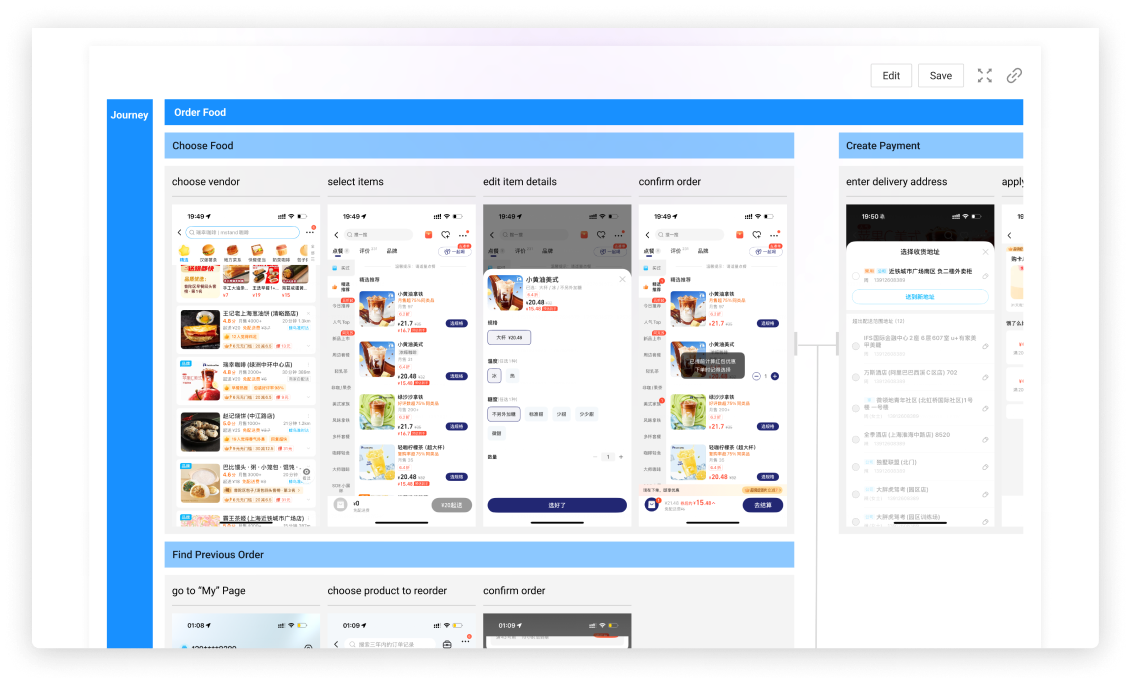
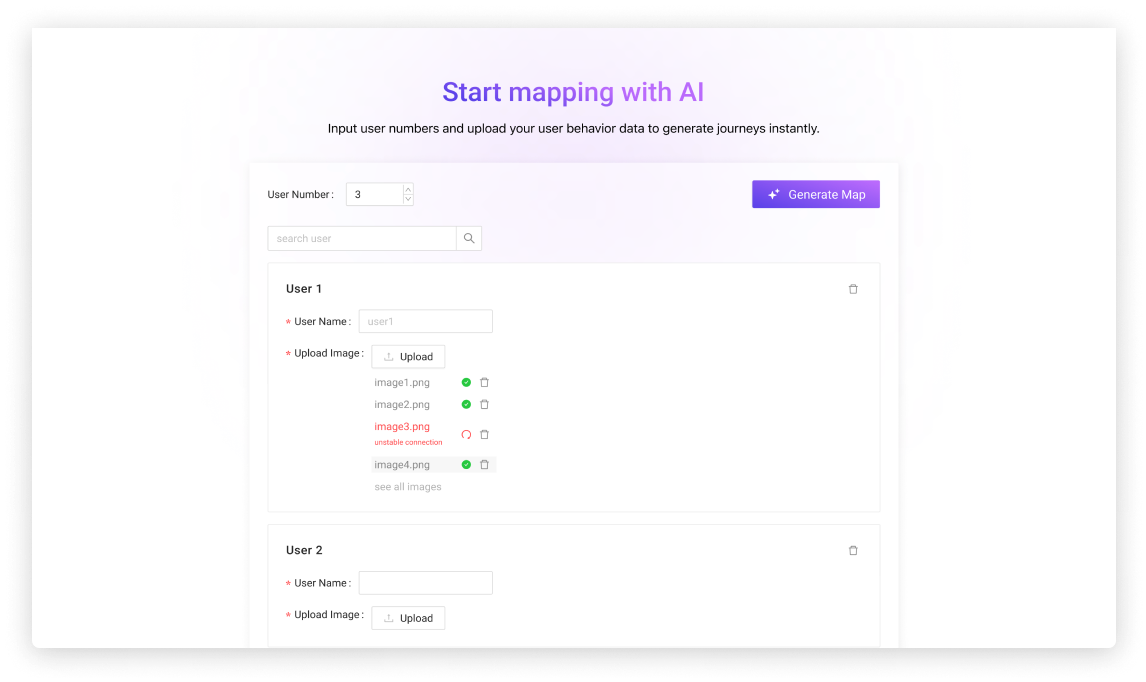
company

Ele.me
Ele.me is Alibaba’s key local services ecosystem. It provides instant food delivery and last-mile logistics within cities, serving millions of users every day.
Team
AI Design Team (Under Logistics System Design Team)
1 Sn. Design Team Lead, 2 Technical Consultants, Ella
Design tools and platforms to enhance designer’s working efficiency.
Importance of User Journey
On average, Ele.me designers spend 2 - 4 weeks creating journey maps to reconstruct behavior paths and identify issues. This tool streamlines the process, cutting time, cost, and effort while accelerating Ele.me’s design output.
Problems
At Ele.me, the effectiveness of journey mapping is hindered by incomplete or unreliable user behavior data and inconsistent practices, making it difficult for designers to generate accurate insights and guide design decisions
1.
Data Collection Problem
low data quality & time-consuming
2.
Journey Creation Problem
low journey quality
Goal
Create an end-to-end AI user journey analysis tool that:
Automate and standardize user behavior data collection
Automate journey map creation with consistency and high-quality insights
How might we create this tool:
1. User Behavior Data Collection
INITIal proposal
Create a company-specific desktop plugin that integrates an internal auto-screenshot tool to automatically capture user behaviors, alongside a system that records raw user data at the system, browser, and page levels.
problems
Time-consuming
Resource-intensive
Redundant effort
Current method
Leverage open-source screenshot tools and the internal Analytics & Event Management (AEM) system to capture user data—including images and behavior data—at both browser and page levels.
pros
Time-saving
Easy to test
Resource-efficient
Future blueprint
Replace the open-source screenshot tool with an internally developed one, improving AEM system to add the capture of raw data at both system and real-life levels.
improvements
Data safety
Targeted features

2. Automatic Screenshots-to-Journey Map
1.
Single User Journey Mapping
Automatically generate individual user journey
2.
Journey Integration
Aggregate multiple user journeys
3.
User Interface
UI design for the tool
2.1 Single User Journey Mapping
standards
90%
Image Consistency
80%
Image Completeness
70%
Title Accuracy
Model Iteration 1 | One multimodal model to handle all tasks

Model Iteration 2 | Model Collaboration

Final performance
> 85%
Image Consistency
> 90%
Image Completeness
> 80%
Title Accuracy
2.2 Journey Integration
How
Analyzed the logic and process of integrating user journeys, distilled two key elements—branching and unification—and mapped the critical steps across phases.
Model Iteration 1 | Define the AI’s task & Data Input

Model Iteration 2 | Add Task Logic & Structure

2.3 User Interface
Design the user interface for an AI journey tool from scratch based on Alibaba's Ant Design System.
Data input

Image upload
Iteration 1
Iteration 2
Iteration 3

:
Upload Image
*
Upload
image1.png
image2.png
image3.png
unstable connection
image4.png
see all images
:
Upload Image
*
Upload
image1.png
image2.png
image3.png
unstable connection
image4.png
see all images
Add error feedback
add retry shortcut

generate & Pause journey map
Initial
After
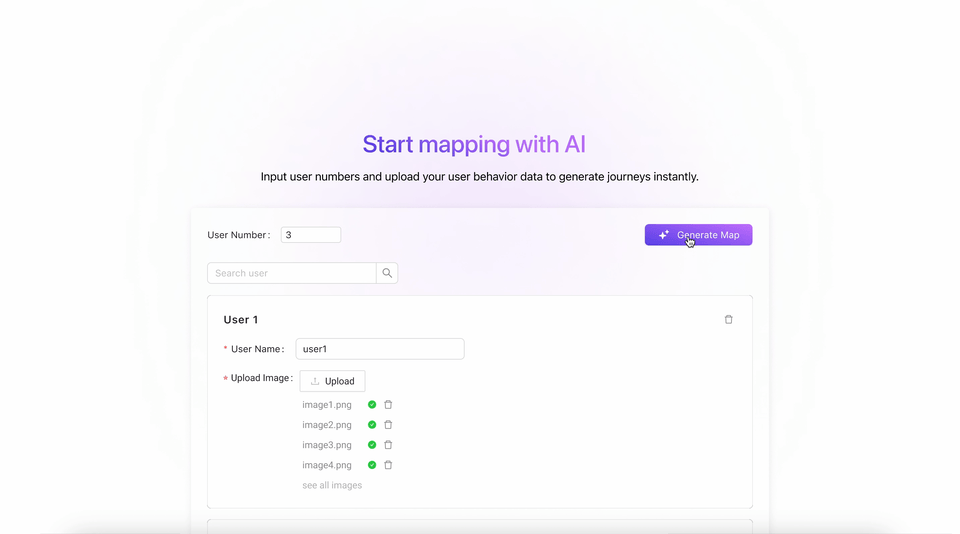

Journey Visualization
initial
final


Replacing icons with text labels for frequently-used features, improving clickability and ease of use
Adding links to
reduce cognitive
load.
Manual edit process
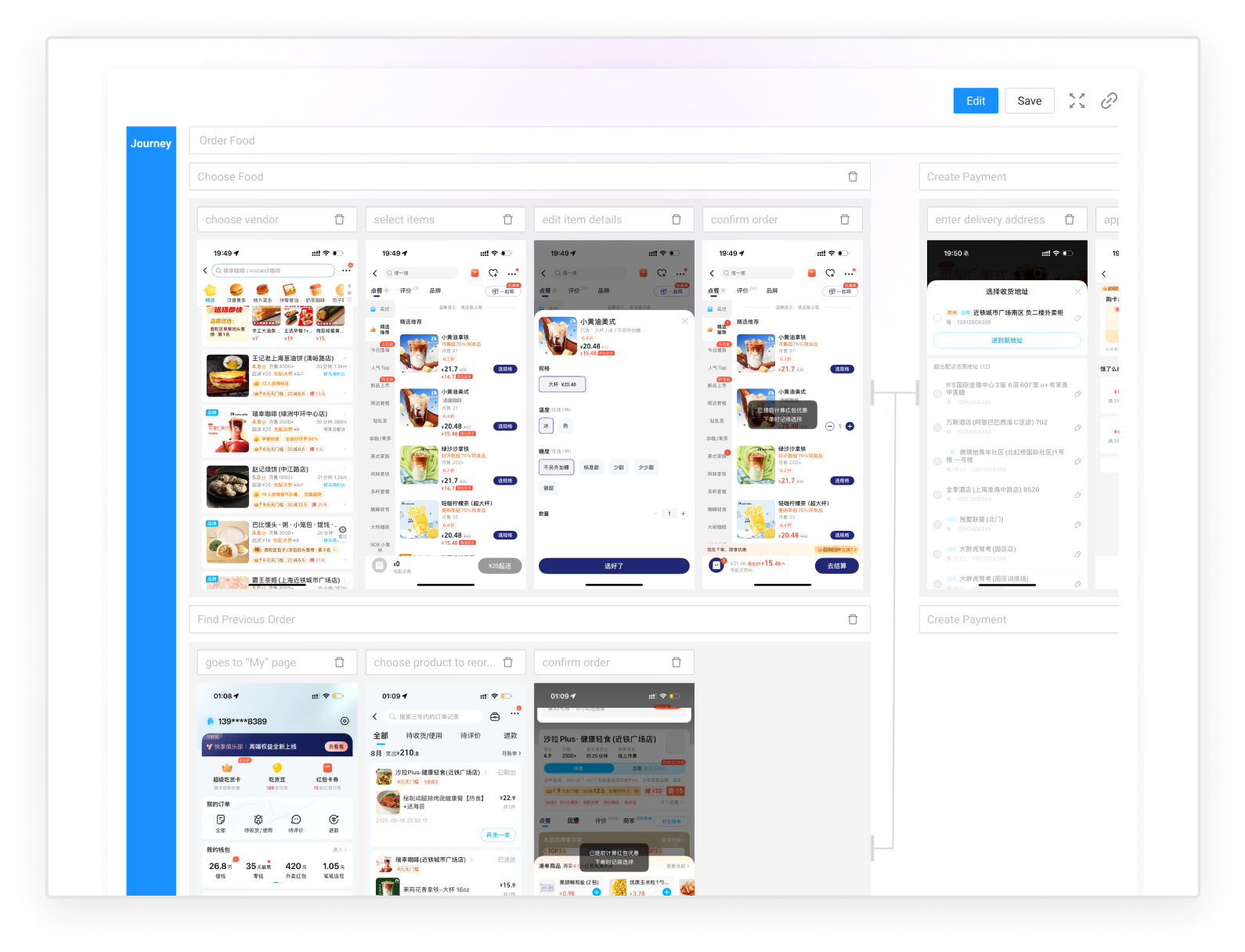
Level 1
Level 2
Level 3
Level 4
Deletion is hierarchical: if a Level 1 item is deleted, all its associated Level 2, Level 3, and Level 4 items are also removed.
Additional Contribution
1.
Vibe Coding
Integrate AI workflows and ML models, allow user input via the UI, and visualize the output on the front-end
2.
AI Problem Analysis
Use AI to connect insights across the user journey and help designers identify problems and opportunities more efficiently



AI single-journey workflow
Image Analysis Model
Model for linking journeys
Model for integrating journeys

User behavior data
Code
AI workflows & models
User input via the UI, store user input
Journey visualization on the frontend
Call model API
Call model API
Save model output
vibe coding


AI problem analysis
standards
Blue print
Utilized AI workflows and different internal resources to evaluate problems in line with design standards.
What I learned
What if no single AI model can produce the ideal outcome on its own?
It is common that when designing with AI, its capabilities may not reach the state we want. How should this be addressed?
Define standards, test and iterate to meet them, and establish a future vision for continued progress.
How to address design challenges arising from standards, creativity, or business logic constraints?
Explore methods by leveraging company resources alongside self-directed research and exploration.
© 2025 Ella Zhou